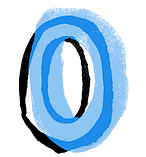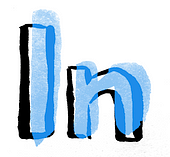Are we forgetting about the most powerful design tool?
How we use technology changes drastically every year — is design keeping up?
 Our work, as digital designers, now touches billions of people every day. Each of those people spending on average 4 hours a day using just their phone. This means that our industry shapes at least 25% of most people’s waking lives — contributing to how we all feel, how we act. What needs we fulfil and in what order.
Our work, as digital designers, now touches billions of people every day. Each of those people spending on average 4 hours a day using just their phone. This means that our industry shapes at least 25% of most people’s waking lives — contributing to how we all feel, how we act. What needs we fulfil and in what order.
How often do you think about it? I thought I did, but these changes are happening quick, and to be honest, I am not keeping up. I got stuck in the ‘design is craft’ narrative we created for ourselves as digital designers in early 2000’s. Ten years ago I was working on websites and brands for tiny local businesses — the stakes were high for individuals owning these businesses, but frankly, low for humanity.
Now, years later, I find myself with tens of millions of people using my work, and not only do I know just a few of them personally — I realise that I have no real concept of what impact my work has on the things that really matter to all these people.
One of the ways we’re dealing with this lack of connection to the impact of our work, is that we don’t really call people, people. We’ll call them users, or maybe if we’re progressive, customers — to frame them in a way that’s useful to what we’re building, blocking out everything else. Sometimes we make them up from our biases, inventing personas — two paragraphs that are meant to represent a totality of a single humans experience.
I’m writing this at least a few years since we last had a real debate on the wider impact of our how we deliver digital products to people. We long abandoned any potential standardisation and regulation of that process. It feels almost taboo to mention regulation in 2020. The best we have these days is the arbitrary, opaque, partial, inconsistent and self-serving Apple App Store Review process, engaging design departments around the world in the cat and mouse game of ‘Which vague wording will we get away with on our paywall?’. Is this really the best we can do?
I’m finding myself at this point of my ‘design career’ stunned by all this. How did I get here again?
 In hindsight what I see, are turning points — moments of decision when precedents are set, in products, teams, companies. These are points where values and missions we say we have collide with the real priorities.
In hindsight what I see, are turning points — moments of decision when precedents are set, in products, teams, companies. These are points where values and missions we say we have collide with the real priorities.
In companies with truly great cultures the defined mission & values tend to be closely aligned with the practiced ones. Teams feel they’re part of something bigger and they can make decisions to align with the values. They exercise the responsibility that comes with the power of tech, rather than avoid it and shift it elsewhere.
In the default world however, we’re often finding ourselves working around the defined mission & values, executing on decisions we don’t fully agree with. We make things complicated, we build out financial models that few can understand. We confuse ourselves and and make the structures we created responsible for our decisions.
A designer can only create a good solution if they really understand the problem. So what do you do when you find yourself in one of these situations where a decision is about to be made? Use the most powerful design tool there is and ask questions.
Next time you or your team are about to make a decision, pause and ask:
What are the reasons we’re doing this?
Get clear on whose problem are you really solving. Is the ultimate beneficiary the user, or is it your company? And if you are solving primarily your problem, are users ultimately going to reward you for solving your own problems?
Would I be OK if a service I use did this?
This is the rule of thumb I use especially when making decisions around pricing and encouraging habitual behaviours. Despite all our differences, we’re all people and we all care about similar things — we all want peace of mind and freedom.
If an app affects my peace of mind, it’ll likely affect that of others, whether they’re conscious of it or not. With every compromise like this, we’re excluding more and more people from our products,
Am I causing any unplanned side effects?
This is especially worth asking if you’re thinking of ‘gamifying’ your product or seeking to create loyal users that keep coming back.
If those people are now with your product for more time — what were they doing in that time before? What needs are they not fulfilling now? Is it rest? Is it time with family? Are they overall happier or less happy?
We designers often don’t get to decide everything. But a lot more is down to us than we think. The simple art of asking questions is often enough to shift a conversation, and ultimately whole team’s decision. Often, we don’t even need to do more than ask the right question at the right time.
In the moment we ask that question, usually one of two things happens. Either we’re very likely to come to the same conclusions, or we get clear about the differences in our goals and values. Both of those are good outcomes, as they create clarity and trust and bring about the wider discussion about our team’s and organisation’s real goals and values.
And it’s these discussions that really help us get closer to the real impact our work has on people.
Hi, I’m Milosz Falinski, the author of this post! I’m a co-founder of Lumi Design, where we help startups to find product-market fit and maximise impact they have on the world. Schedule a call with me here!
